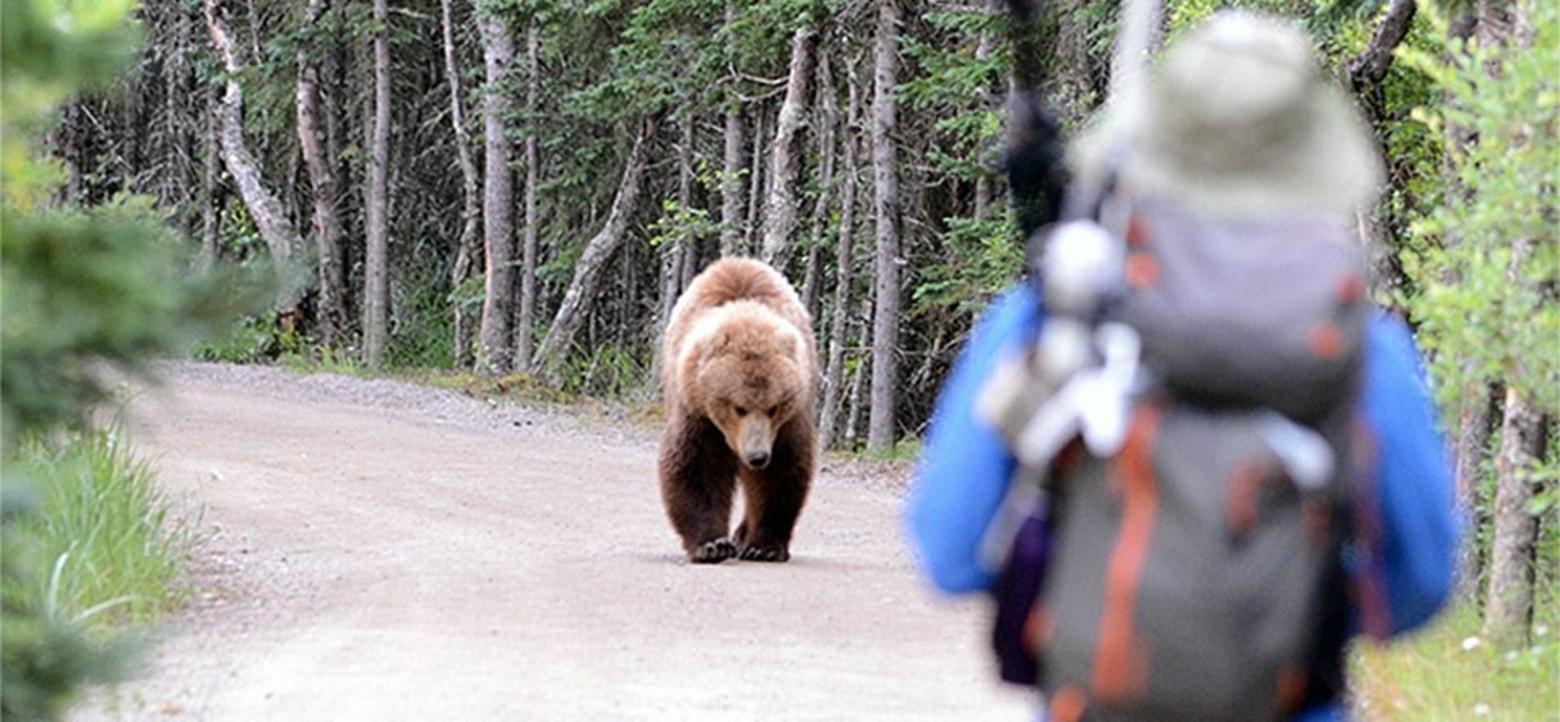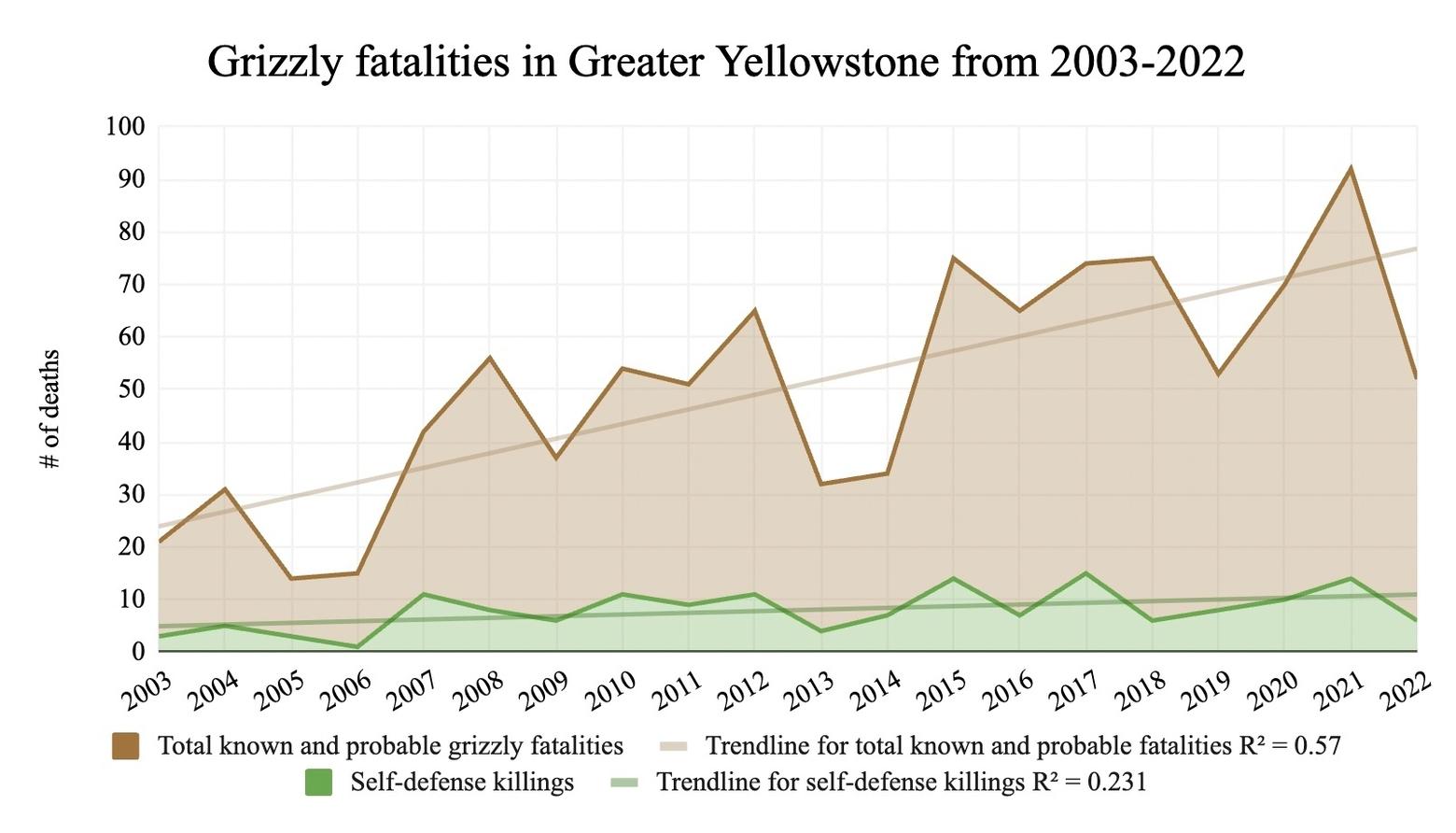Back to StoriesAre Humans Killing More Grizzlies?
October 31, 2023
Are Humans Killing More Grizzlies? Since August, five Greater Yellowstone grizzlies have been killed by hunters and anglers in self-defense. Why?
EDITOR'S NOTE: "In Short" is a new MoJo department aimed at getting you quick and digestible information about Greater Yellowstone. We'll link to longer articles that you can dive into if you want to learn more. We'd love to hear your feedback. Email us at mojo@mountainjournal.org.
by Julia Barton
A hunter
fatally shot a charging grizzly bear at close range on Oct. 21 in the Gravelly
Range near Ennis, Montana. The female grizzly, according to Montana Fish,
Wildlife and Parks, was healthy and lacked a known conflict record and appeared
to have been building a den near where the run-in occurred.
The
incident marks the fifth grizzly reportedly killed by recreationists acting
in alleged self-defense in areas surrounding Yellowstone National Park in
Montana and Idaho since August. No such incidents have been reported in
Wyoming.
FWP
reported that two grizzlies were killed under similar circumstances by hunters
and anglers in two unrelated incidents in the Tom Miner Basin on Aug. 30 and in
Beattie Gulch, an area north of Gardiner, on Sept. 23. In Idaho, a male and
female grizzly faced the same fate after charging archery hunters near the
Island Park Reservoir and Henry’s Lake on Sept. 1 and Sept. 30 respectively,
according to Idaho Fish and Game.
The Greater
Yellowstone Ecosystem is home to an estimated 965 grizzlies, wrote U.S. Fish and
Wildlife Service officials in their 2022 Grizzly Bear Recovery
Program Annual Report, a number double the estimated 136-300 grizzlies residing in the
region when they were first listed as a threatened species in 1975.
Grizzlies
are expanding their range back into places they haven’t inhabited in more than
a century, says the Interagency Grizzly Bear Committee. This increase, paired
with more people living and recreating in the Greater Yellowstone, is putting
more bears in closer proximity to humans, thus increasing conflict potential.
Of the 46
known and probable grizzly bear deaths in the GYE included in the 2022 IGBC Annual Report, 40 can be attributed to human causes,
including six self-defense killings. Grizzly deaths have, on average, been
increasing over the past decades, mirroring population increases, with a large
percentage consistently attributed to human causes.
Despite
their growing population, grizzlies in the area may likely face
food stress in
the coming years as a result of human interactions and climate change.
Recreationalists
can take a number of precautions to minimize the likelihood of running into
bears, including traveling in groups, making noise and avoiding animal
carcasses. IGBC notes that many of these suggestions, however, contradict the
practice of hunting, making it particularly difficult to decrease
hunter-grizzly conflicts.
Perhaps the
most common recommendation from experts for folks recreating in bear country is
to carry and know how to use bear spray. In the event of a grizzly attack, fewer
humans and bears are injured when bear spray is used rather than a firearm.
Related Stories
September 9, 2024
Virtual Fences: A Promising Tool for Conservation and Ranching
Bozeman workshop and Crazy Mountain project explore the potential in virtual fencing technology.
November 16, 2023
Montana unveils first wolf management plan update in 20 years
The Montana Fish and Wildlife Commission reduced this year’s quota from 450 to 313 wolves following slight population decreases since 2020....
September 25, 2024
Wolf-Abuse Incident Prompts New Wyoming Bill
Draft bill protects the right to run down predators, with
updated laws to limit ongoing suffering. Citizens say bill doesn’t go far
enough.




